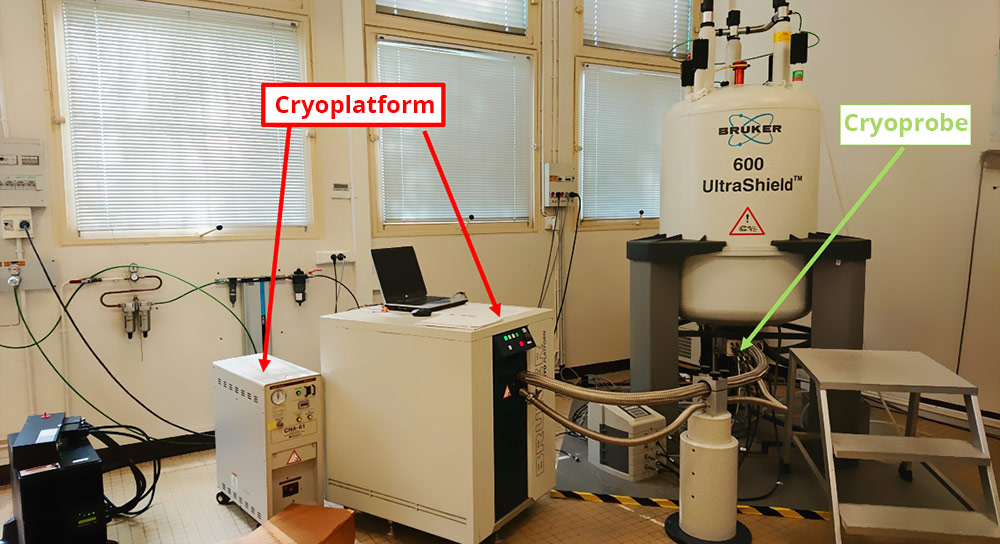Basics of NMR
NMR instrumentation
Link between instrumentation & gain in signal/noise ratio and resolution

- The energy of the nuclear spin transition is proportional to B0. The signal/noise ratio of the NMR signal therefore depends on:

- Bo2
- μ ∝ γ
- (Nα – Nβ) ∝ γ
- The magnetic flux measured by the detection system ∝ γ
- Chemical shifts are by definition independent from B0 but the resonance frequencies depend on it. The difference between two frequencies is therefore proportional to B0

Reference: Nuclear Magnetic Resonance, P. J. Hore, edition: Oxford Chemistry Primers, ISBN : 978-0198556824

The major intrinsic limitation of NMR is its low sensitivity due largely to the small difference in spin populations at thermodynamic equilibrium. According to Boltzmann’s distribution, about one spin out of 10,000 is excited during an NMR experiment (T=300K, B0= 9.4T, H-1 NMR). This order of magnitude of sensitivity is much lower than that of electronic spectroscopies.
Possible solutions to increase the signal/noise ratio are:
- Increasing the magnetic field. The highest stable and homogeneous magnetic field available is 23.5 T (1 GHz ~ 12M€). Around 2020, the first 1.2 GHz spectrometer is expected to become available.
- The use of “cryoprobes” or probes cooled with helium or liquid nitrogen to reduce the contribution of electronic and thermal noise (~ 200 k€)
- The use of the electronic polarization transferred to the nuclear polarization
- Dynamic Nuclear Polarization (~ 300 k€)
- PHIP: Para-Hydrogen Induced Polarization (~ 20 k€)






